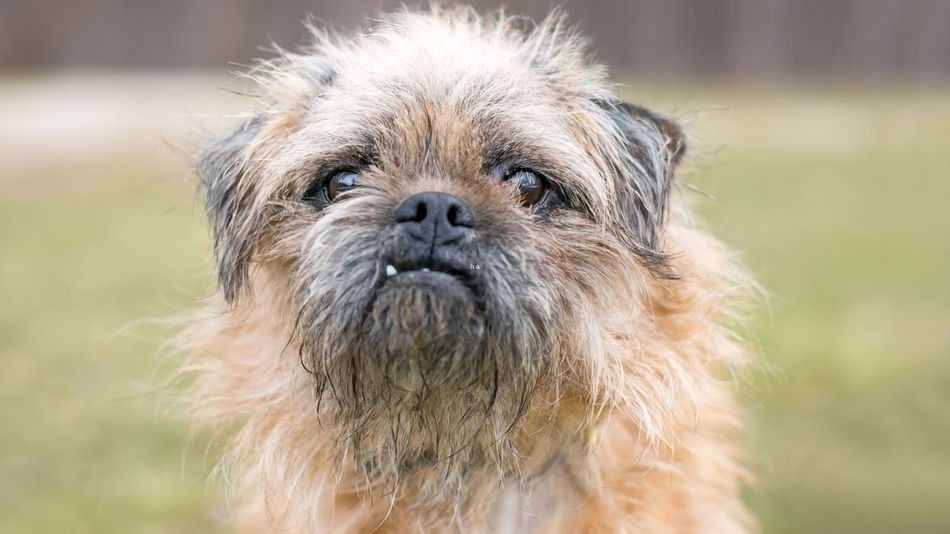
The Pug Poodle mix, also known as the Pugapoo, is a designer hybrid dog that combines the lovable traits of the ancient Pug breed with the intelligent Poodle. This small-sized crossbreed typically stands 6-15 inches tall and weighs between 10-30 pounds, with a lifespan of 10-14 years. First developed as a companion dog, the Pugapoo inherits the Pug's affectionate nature and the Poodle's sharp intelligence, making it an ideal family pet. While the appearance can vary based on dominant genes, these dogs generally feature either straight or curly coats in various colors including white, black, brown, and cream.
Pug and Poodle Mix Health Care
Preventive Health Screening
While previous reports covered general health issues, this section focuses specifically on recommended preventive screening tests. According to veterinary guidelines from reputable sources, Pugapoos should undergo regular screening for:
- Annual eye examinations to check for progressive retinal atrophy and other ocular conditions
- Hip and knee evaluations starting at 6 months of age
- Regular blood work to monitor for von Willebrand's disease
- Cardiac assessments, especially for dogs exhibiting breathing difficulties
Temperature Sensitivity Management
This section addresses the unique temperature regulation needs that weren't covered in previous reports. Due to the brachycephalic traits inherited from the Pug parent, Pugapoos require special care in managing temperature extremes according to experts. Key considerations include:
- Limiting outdoor activity when temperatures exceed 75°F (24°C)
- Providing climate-controlled indoor environments
- Monitoring breathing patterns during exercise
- Using cooling mats or vests during warmer months
- Keeping the dog indoors during peak heat hours (10 AM - 4 PM)
- Ensuring adequate hydration through multiple water stations
The temperature sensitivity varies based on how much the puppy inherits the Pug's facial structure versus the Poodle's longer muzzle. Dogs with more Pug-like features require stricter temperature management protocols.
Pug Poodle Mix Appearance and Physical Characteristics
Size and Structure
According to breed specifications, the Pugapoo typically stands between 8-15 inches tall at the shoulder and weighs between 10-30 pounds. Their physical structure tends to be compact and sturdy, inheriting the Pug's stocky build but often with slightly longer legs from the Poodle parent. The chest is moderately broad, and they generally have a well-proportioned body with a level topline.
Distinctive Facial Features and Coat Variations
While breed profiles indicate that facial features can vary significantly based on genetic dominance, most Pugapoos display a blend of both parent breeds' characteristics. The muzzle length typically falls between the Pug's flat face and the Poodle's longer snout. Their eyes are usually round and expressive, set moderately apart. Coat textures range from straight to curly, with possible colors including:
- Solid colors: White, black, gray, cream
- Mixed variations: Brown with white markings
- Rare combinations: Red, tan, or fawn
The coat density and texture largely depend on which parent's genes are more dominant, affecting both their appearance and grooming needs. Ears can either hang close to the head like a Pug's or have a slight lift similar to a Poodle's.
Training and Exercising Your Pug Poodle Mix
Mental Stimulation Training
While previous reports covered basic training approaches, this section focuses specifically on mental enrichment activities. According to breed experts, Pugapoos require dedicated mental stimulation due to their high intelligence. Key training activities include:
- Food puzzle toys that challenge problem-solving skills
- Hide-and-seek games with treats or toys
- Obedience training sessions limited to 10-15 minutes
- Teaching new tricks every 2-3 weeks
- Rotating between 4-5 different interactive toys weekly
Indoor Exercise Solutions
While earlier sections discussed general exercise needs, this portion addresses specific indoor activities suited for the Pugapoo's size and energy level. According to breed specialists, recommended indoor exercises include:
- Stair climbing (3-5 repetitions, 2-3 times daily)
- Indoor agility courses using household items
- Tug-of-war sessions lasting 5-10 minutes
- Indoor fetch in hallways or open spaces
- "Find it" games combining physical and mental exercise
The exercise intensity should be adjusted based on the individual dog's facial structure, with more Pug-like features requiring gentler activities to prevent breathing difficulties.
Pug and Poodle Mix Socialization Needs
Early Life Social Development
While previous reports covered general socialization, this section focuses specifically on critical developmental periods. According to breed experts, Pugapoo puppies require carefully structured socialization between 3-16 weeks, including:
- Introduction to 10-15 new people weekly
- Exposure to various surfaces and textures
- Controlled interactions with vaccinated dogs
- Positive experiences with common household sounds
- Gentle handling by different family members
Senior Socialization Requirements
Research shows that elderly Pugapoos have unique social needs distinct from previous life stages. Key considerations include:
- Maintaining 2-3 regular canine friendships
- Daily 15-minute social interaction sessions
- Structured playdates with familiar dogs
- Gentle socialization in quiet environments
- Avoiding overwhelming social situations
The socialization intensity should be adjusted based on the individual dog's personality and energy levels, with more reserved dogs requiring a gentler approach compared to outgoing ones.
Conclusion
The research on Pug and Poodle mixes (Pugapoos) reveals them to be unique companion dogs requiring specialized care across multiple areas. These dogs typically range from 8-15 inches in height and 10-30 pounds in weight, with varied coat types and facial features depending on which parent breed's genetics are dominant. Key findings highlight their specific health needs, including regular screening for eye conditions, hip issues, and careful temperature management, particularly for those inheriting the Pug's brachycephalic traits.
The research emphasizes the importance of structured training, exercise, and socialization programs tailored to the Pugapoo's characteristics. Mental stimulation through puzzle toys and controlled exercise routines is crucial, while socialization needs evolve from carefully planned puppy experiences to gentler senior interactions. These findings suggest that potential Pugapoo owners should be prepared for dedicated healthcare monitoring, consistent training efforts, and careful environmental management to ensure their pet's wellbeing. The mixed breed's unique combination of traits requires a balanced approach to care that accounts for both Pug and Poodle characteristics.